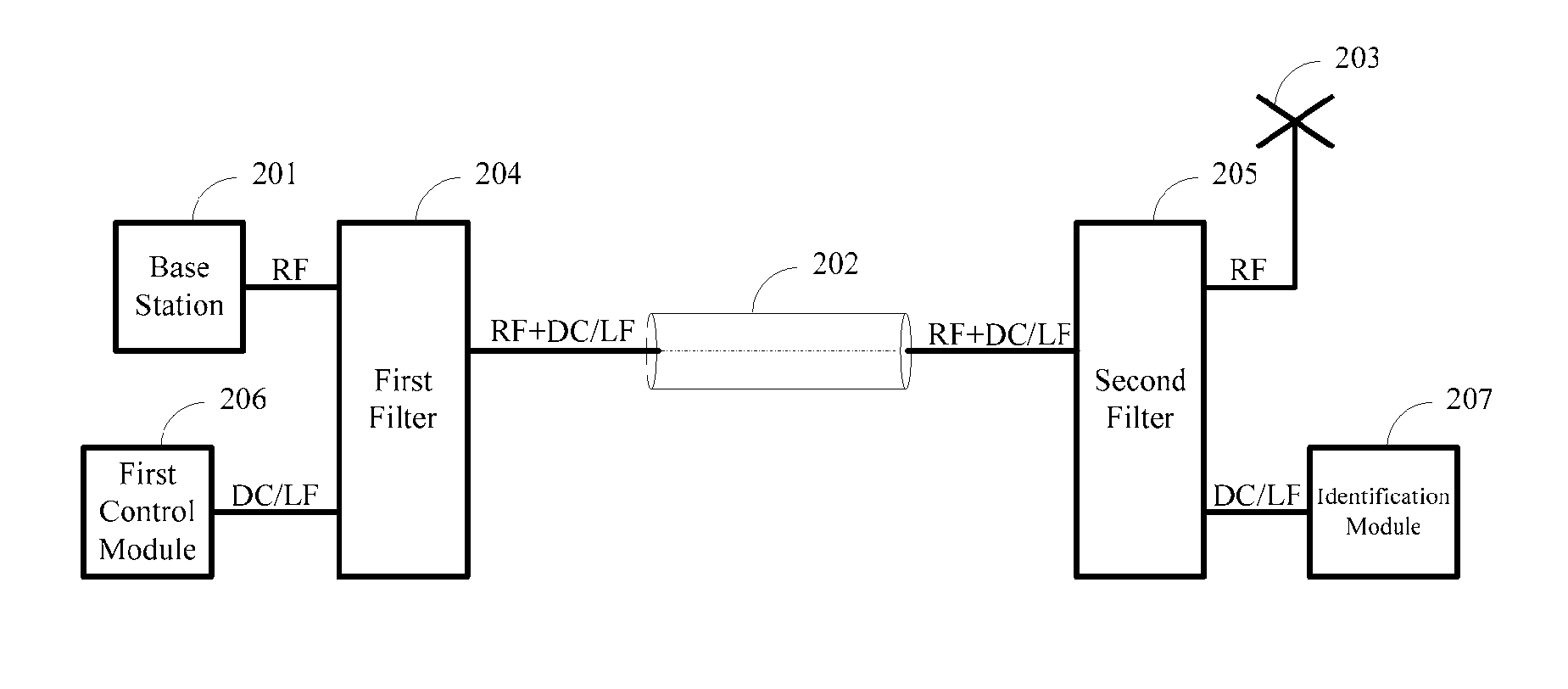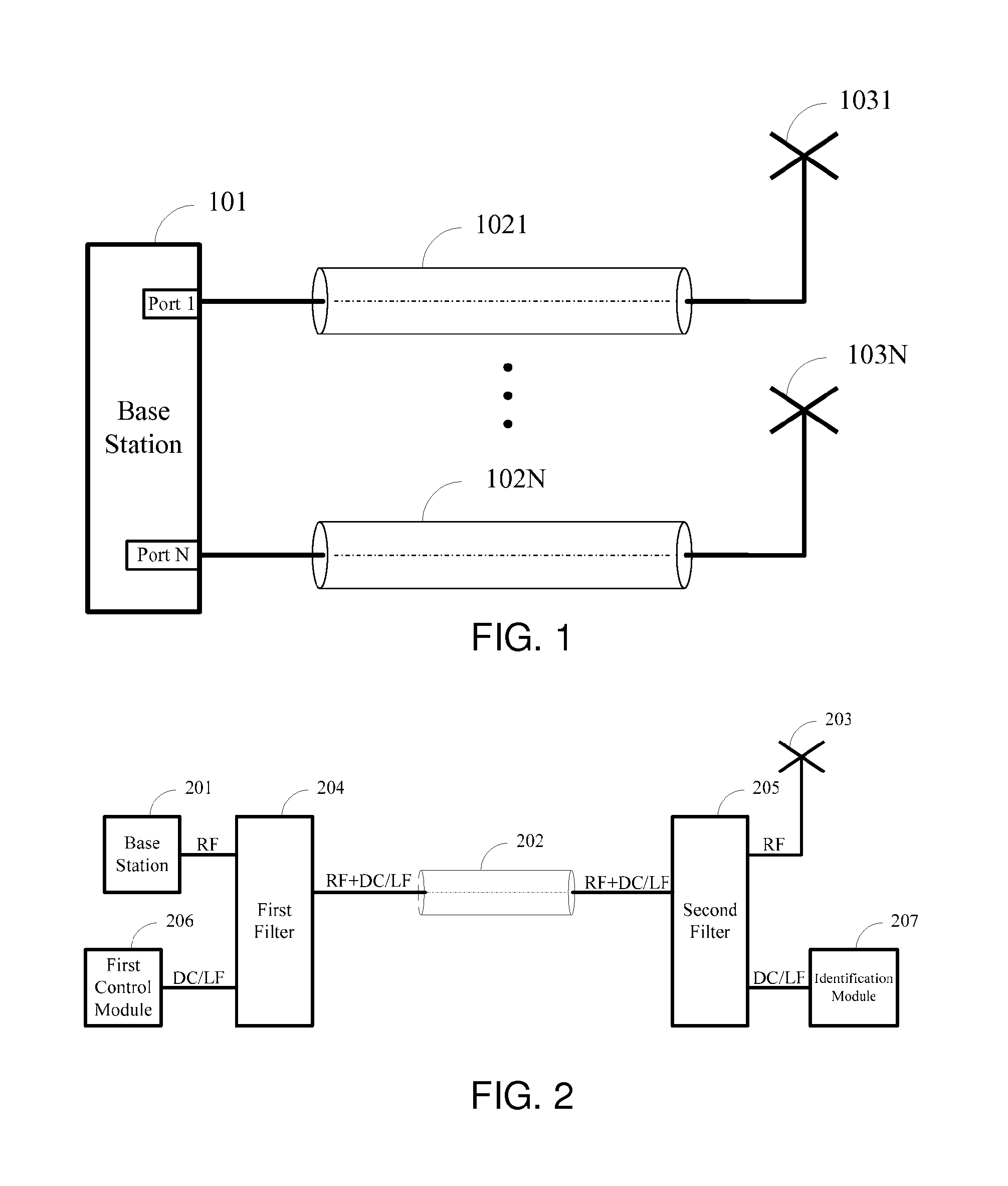Radio communication system and method for communication between base station and antenna
a radio communication system and antenna technology, applied in the field of wireless communication, can solve the problems of limited access to the base station hardware (e.g. for maintenance purposes), difficulty in identifying antennas, and weaknesses of schemes, so as to simplify maintenance tasks, simplify the detection and analysis of failures, and increase the availability of the system and its base station
- Summary
- Abstract
- Description
- Claims
- Application Information
AI Technical Summary
Benefits of technology
Problems solved by technology
Method used
Image
Examples
Embodiment Construction
[0052]To make the objective, technical solution and merits of the present invention clearer, the present invention is described hereinafter with reference to the following embodiments.
[0053]Referring to FIG. 2, embodiments of the invention make use of a technique of coupling direct current (DC) or low frequency (LF) signals into an RF cable in addition to an RF signal from a different source. Specifically, the RF signal provided from an RF port of a base station 201 and the DC / LF signals provided by a first control module 206 are inputted to a first filter 204, wherein the first control module 206 may be a source other than the base station 201. Thereafter, the first filter 204 combines them into a single output signal (i.e., an RF+DC / LF signal) and transmits the RF+DC / LF signal to a second filter 205 through an RF cable 202. Specifically, the first filter 204 connects with a first end of the RF cable 202, and the second filter 205 connects with a second end of the RF cable 202. The...
PUM
 Login to View More
Login to View More Abstract
Description
Claims
Application Information
 Login to View More
Login to View More - R&D
- Intellectual Property
- Life Sciences
- Materials
- Tech Scout
- Unparalleled Data Quality
- Higher Quality Content
- 60% Fewer Hallucinations
Browse by: Latest US Patents, China's latest patents, Technical Efficacy Thesaurus, Application Domain, Technology Topic, Popular Technical Reports.
© 2025 PatSnap. All rights reserved.Legal|Privacy policy|Modern Slavery Act Transparency Statement|Sitemap|About US| Contact US: help@patsnap.com



